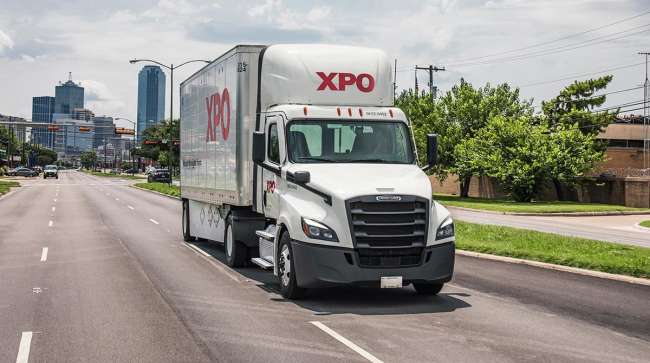Senior Reporter
XPO Reports Q2 Income, Revenue Decline

[Stay on top of transportation news: Get TTNews in your inbox.]
XPO saw second-quarter net income and revenue decline, but the company sees momentum headed into the third quarter.
The less-than-truckload carrier on Aug. 4 reported that Q2 net income fell to $33 million, or 28 cents per share, compared with $141 million, $1.23, a year ago. XPO said Q2 net revenue declined 6% to $1.92 billion compared with $2.05 billion a year ago, but noted that revenue inched up 1% compared with Q1 and is showing positive trends early in the third quarter.
“Our momentum continued into July, when we moved more volume through our network, accelerating year-over-year growth in tonnage and shipments per day to 4% and 9%, respectively. Our yield growth also continued to improve in July, driven by our pricing initiatives,” XPO CEO Mario Harik said in a statement. “Looking forward, we’ll continue to deliver financial and operational excellence through the disciplined execution of our LTL 2.0 plan. This includes ongoing investments in network capacity of tractors, trailers and doors. We remain confident in achieving our long-term targets.”
The Greenwich, Conn.-based company’s operating ratio worsened during the quarter to 88.7 from 84.1 in the same period a year ago. Operating ratio measures a company’s expenses as a percentage of revenue and determines efficiency. The lower the ratio, the greater the company’s ability to make a profit. An operating ratio below 100 indicates a company can generate a profit and an operating ratio above 100 indicates the company is not producing enough revenue to remain profitable after it pays all of its expenses.
“The primary reason for the change in the OR was fuel. Fuel does have an impact on our business, as well as other LTLs,” XPO Chief Strategy Office Ali Faghri told Transport Topics. “Diesel prices were down more than 30% on a year-over-year basis, and that impacted our operating ratio, as well as some of our LTL peers.” Faghri noted that LTL carriers typically make additional revenue from their fuel surcharge; as diesel prices fall, so do the surcharges.
That situation could change; the national average price for a gallon of diesel shot past $4 a gallon as July drew to a close. The average price of trucking’s main fuel jumped 32.1 cents over a two-week stretch.
“We delivered a solid quarter in a soft industry environment,” Faghri said. “Within the LTL business specifically, we also took profitable market share. Our shipment counts were up 2% in an industry that is down high single digits.”
Daily shipments were up to 51,220 compared with 50,274 a year ago, but the company is generating less money per shipment. In the second quarter it reported revenue of $348.86 per shipment, compared with $388.10 a year ago.
“As we went into July we reported that our July volumes increased quite a bit on a shipment count basis, and we are up 8.8% and on a tonnage basis we are up 4.2%,” Faghri told TT. “But our tonnage and shipment counts were up quite a bit on a year-to-year basis before the recent industry disruptions. As we got to the end of the month, we have seen an increase in our volumes and that is most likely being driven by what’s taking place in the LTL market.”
The disruption he was referring to was the closure of LTL carrier Yellow Corp., which shuttered on July 30. Before its closure, Yellow had a reputation for being one of the lower-price carriers in the LTL sector, with XPO, Old Dominion and others generally charging higher rates to move freight.
Want more news? Listen to today's daily briefing above or go here for more info
Going forward, Faghri believes there are opportunities for the entire industry.
“When you take out some capacity as you are seeing right now in the market, pricing will get stronger,” he said. “We do expect that there will be tailwinds to both tonnage and yield from the disruption, but it still may be too early to quantify that.”
XPO ranks No. 5 on the Transport Topics Top 100 list of the largest for-hire carriers in North America.




